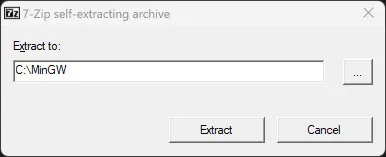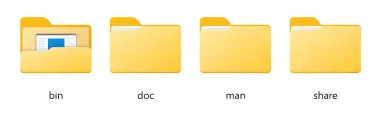
Set up Portable MinGW (GCC) compiler with CMake
portable MinGW portable MinGW GCC GCC Compiler CMake Compiler
MinGW (Minimalist GNU for Windows) is a native Windows port of the GNU Compiler Collection (GCC). It includes freely distributable import libraries and header files used for building native Windows applications and libraries.
CMake is a free, cross-platform, open-source tool that automates build processes, testing, packaging, and software installation using a compiler-independent architecture.
MSYS is a collection of tools and libraries that provides an easy-to-use environment for building, installing, and running native Windows software.
Why Use a Portable MinGW Installation?
A portable installation offers several advantages over a traditional installation:
- Easy removal: Simply delete the folder when no longer needed.
- No system changes: Avoid modifying system files, the registry, or environment variables.
- Flexibility: Copy the installation to a USB drive and use it on any PC.
Installing MinGW (GCC)
-
Download MinGW:
Download the latest version of MinGW from the official MinGW page. The current version is
mingw-18.0.exe. -
Extract the Files:
- Open the downloaded .exe file (essentially a self-extracting ZIP file).
- Choose a location for extraction and click Extract.

- The files will be extracted to the specified location.

-
Locate the Batch Files:
Inside the extracted folder, you’ll find two batch files:
set_distro_paths.bat: Use this to set up the paths in an existing Command Prompt session.open_distro_window.bat: Use this to open a new Command Prompt session with the paths pre-configured.
Adding CMake
-
Download CMake:
Download the latest version of CMake (Windows x64 ZIP) from the CMake download page. The current version is
cmake-3.24.1-windows-x86_64.zip. -
Extract CMake Files:
- Extract the ZIP file to a temporary directory.
- Create a new folder named
cmakeinside your MinGW installation folder. - Copy all files from the extracted CMake folder into the
cmakefolder you just created.
-
Verify the CMake Directory:
The contents of the
cmakefolder should look like this:
Updating the Batch File
To ensure the paths for CMake are correctly configured, update the set_distro_paths.bat file:
-
Open the Batch File:
Open
set_distro_paths.batin a text editor. -
Modify the PATH Variable:
Locate the line:
set PATH=%~dp0bin;%PATH%Replace it with:
set PATH=%~dp0bin;%~dp0cmake\bin;%PATH% -
Save the File:
Save your changes and close the editor.
Final Steps
You’re all set! Use the open_distro_window.bat file to launch a Command Prompt with the MinGW and CMake paths configured.
You can now build projects using the GCC compiler and CMake without modifying your system settings.